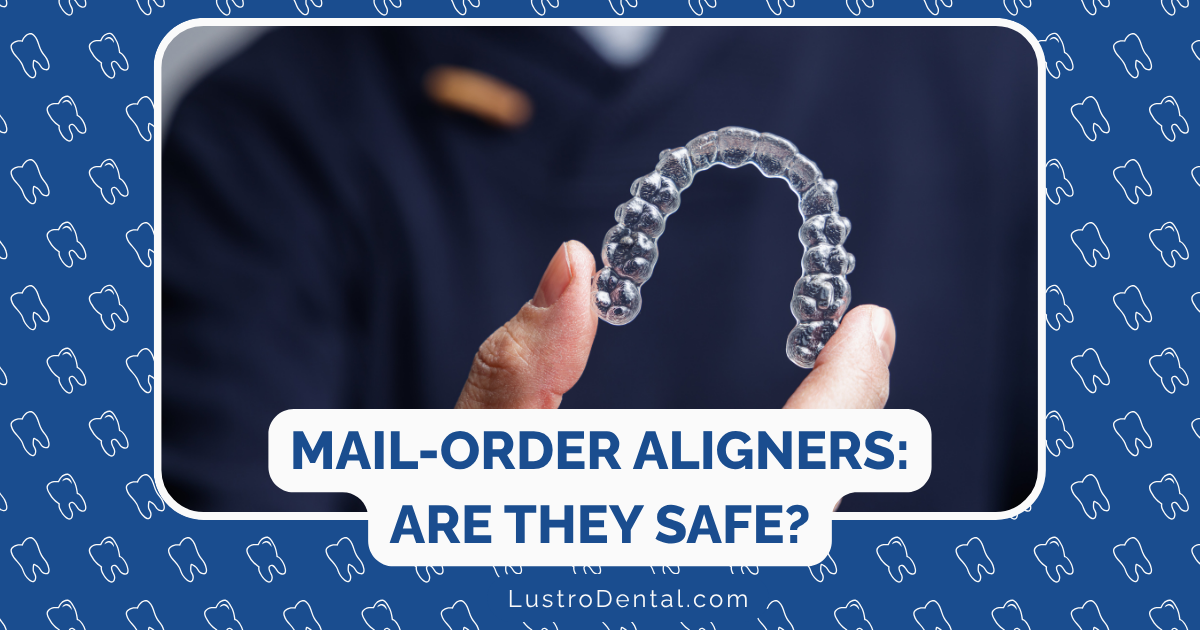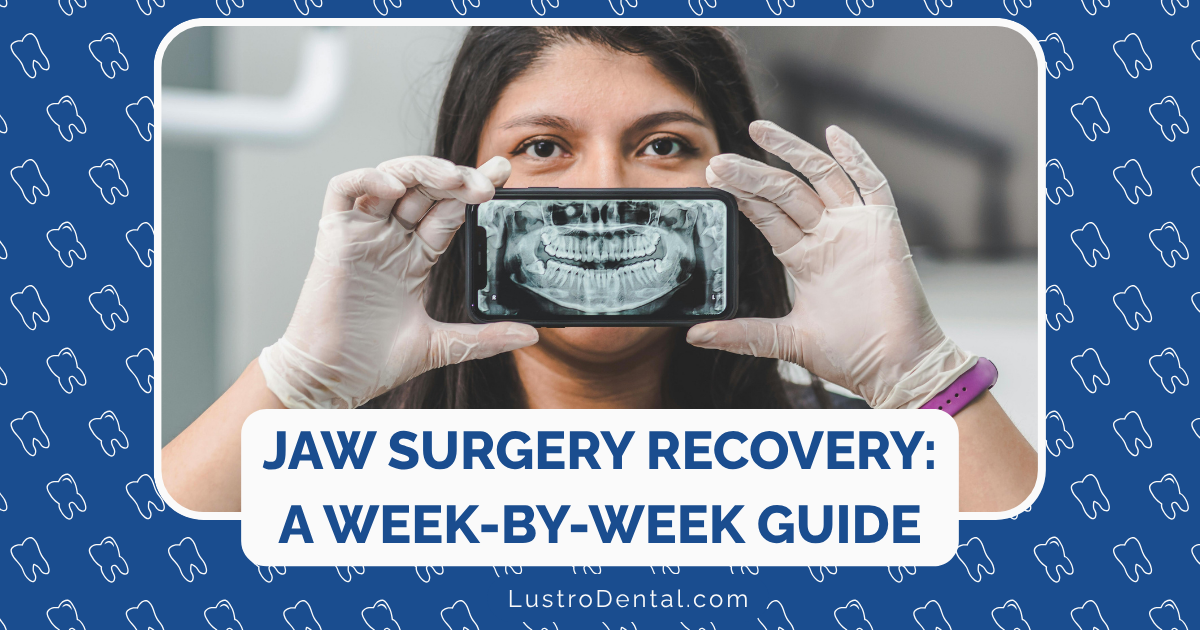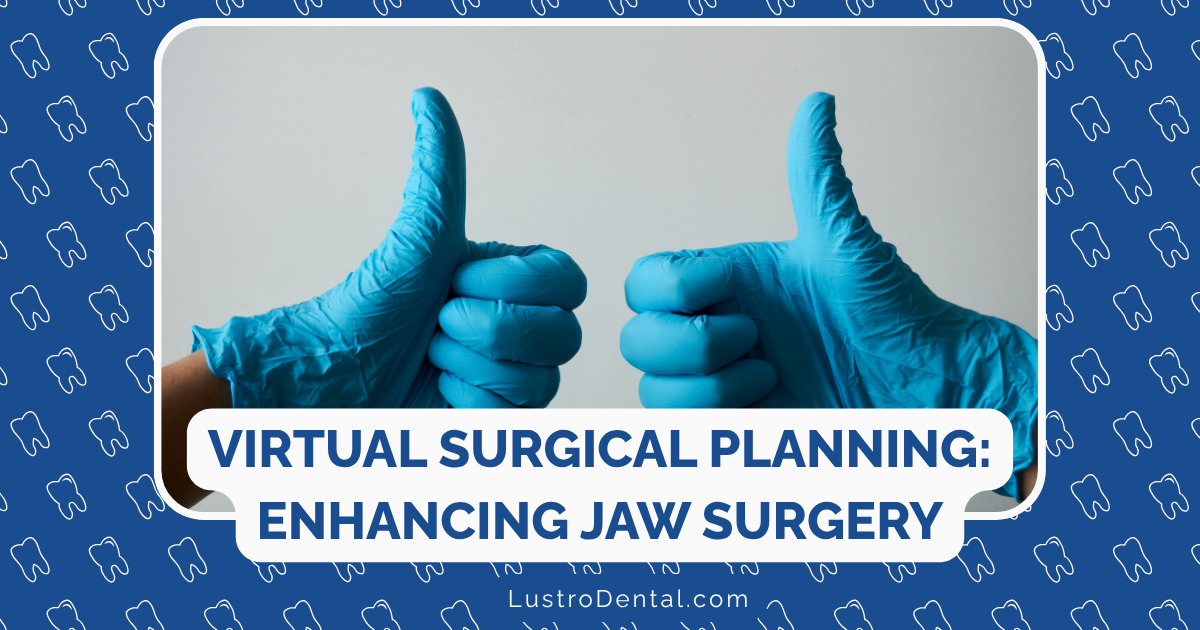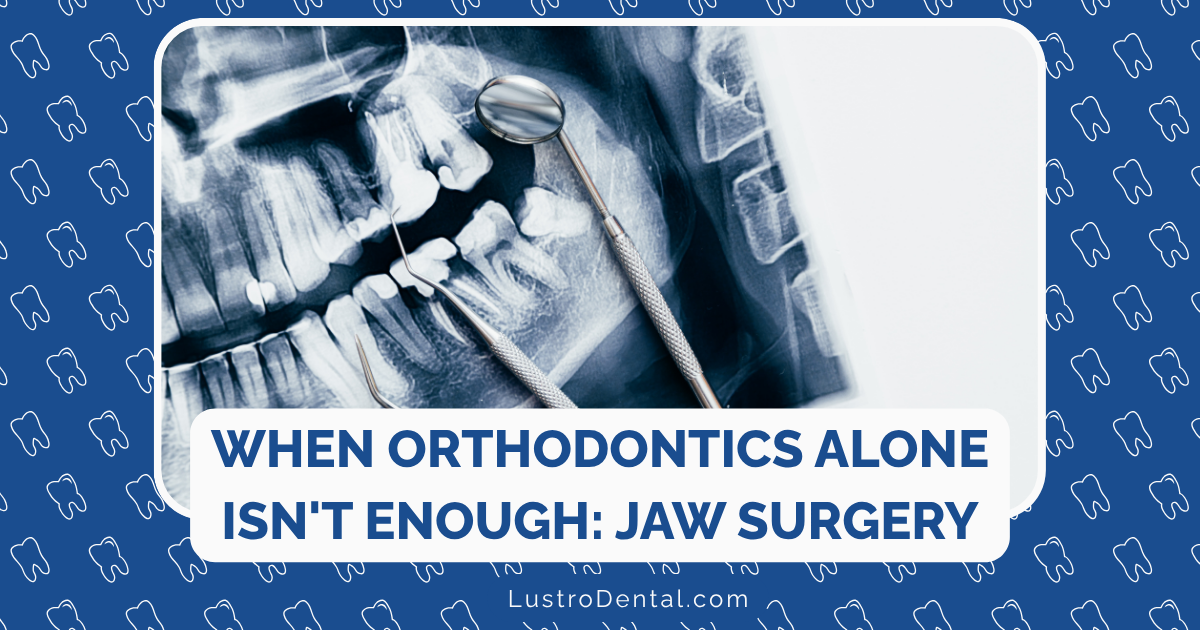Are Mail-Order Aligners Safe? An Honest Assessment from Dental Professionals

The promise is undeniably appealing: straighten your teeth from the comfort of your home, skip the orthodontist visits, and save thousands of dollars in the process. Mail-order clear aligners have exploded in popularity, with slick marketing campaigns featuring beaming smiles and testimonials about convenience and affordability.
But as a dental professional who’s treated thousands of orthodontic cases—including many patients seeking help after mail-order aligner treatments went wrong—I feel compelled to provide an honest, evidence-based assessment of these direct-to-consumer options.
This isn’t about protecting the orthodontic industry or dismissing innovation. It’s about ensuring you have the complete picture before making a decision that could affect not just your smile’s appearance, but your long-term oral health.
Let’s examine what dental professionals really think about mail-order aligners, the scientific evidence behind their safety concerns, and how to navigate this decision wisely.
Understanding the Mail-Order Aligner Process
Before discussing safety, it’s important to understand how mail-order aligners typically work:
- Initial impressions: Customers either use a home impression kit to create molds of their teeth or visit a retail scanning location for digital impressions.
- Remote assessment: These impressions are reviewed remotely by dental professionals (usually general dentists, not orthodontists) who create a treatment plan without an in-person examination.
- Aligner delivery: A series of clear plastic aligners is manufactured and shipped directly to the customer.
- Self-directed treatment: The customer follows instructions to change aligners at specified intervals, typically with minimal professional monitoring through photo uploads or virtual check-ins.
- Completion: After the final aligner, customers typically receive retainers to maintain their new smile.
The entire process usually costs between $1,500-$2,500—roughly half the price of traditional orthodontic treatment with Invisalign or similar in-office options.
What Dental Organizations Say About Mail-Order Aligners
Major dental organizations have taken clear positions on direct-to-consumer orthodontics:
American Dental Association (ADA)
The ADA has consistently opposed direct-to-consumer dental services, including mail-order aligners. In December 2023, the organization reaffirmed its policy stating that DTC dentistry “strongly increases the potential for irreversible harm to patients.”
The ADA emphasizes that moving teeth without understanding a patient’s comprehensive oral condition may lead to “bone loss, lost teeth, receding gums, bite problems, and jaw pain.”
American Association of Orthodontists (AAO)
The AAO has been particularly vocal about mail-order orthodontics concerns. Their survey of orthodontists revealed that 77% had seen patients requiring retreatment after mail-order orthodontic treatment, with 61% seeing such patients at least quarterly.
The organization strongly advocates for in-person evaluations before any orthodontic treatment begins, including radiographic imaging to assess bone structure, root positioning, and overall oral health.
World Federation of Orthodontists (WFO)
The WFO has issued statements emphasizing that orthodontic treatment is a medical service that requires proper diagnosis, treatment planning, and supervision by a qualified professional.
The Scientific Evidence: What Research Shows
Beyond organizational positions, what does the scientific literature tell us about mail-order aligner safety?
Adverse Events and Complications
A 2023 study published in the Journal of Dental Research analyzed reports from the FDA’s MAUDE database (Manufacturer and User Facility Device Experience) related to direct-to-consumer aligners. Among the findings:
- Bite problems were reported in 41.3% of cases
- Orofacial pain occurred in 29.8% of cases
- Periodontal issues (gum problems) appeared in 26.6% of cases
- 69.2% of patients with adverse events subsequently consulted a dentist not associated with the DTC company
- 30 out of 104 reports indicated that patients required additional treatment, including orthodontic retreatment, periodontal therapy, or even root canal treatment
Patient Satisfaction and Outcomes
It’s important to note that not all experiences are negative. A survey of 470 DTC aligner users found that 87.5% were satisfied with their treatment. However, the same study reported that 6.6% experienced side effects severe enough to require a visit to their dentist.
Satisfaction rates were notably lower among those using aligners to correct bite issues compared to those treating simple crowding or gaps.
The Limitations of Current Research
One significant challenge in assessing mail-order aligner safety is the limited independent research. Most studies are either funded by the companies themselves or rely on self-reported data from patients who may not recognize subtle but significant dental problems.
Dr. Sarah Johnson, an orthodontist at Metropolitan Orthodontics, explains: “Many patients don’t realize they’ve developed a posterior open bite—where their back teeth no longer touch properly—until months after treatment when they start experiencing jaw pain or difficulty chewing.”
Specific Safety Concerns from Dental Professionals
When dental professionals express concerns about mail-order aligners, they’re typically focused on several key issues:
1. Lack of Comprehensive Initial Examination
Traditional orthodontic treatment begins with:
- Comprehensive oral examination
- Full set of X-rays (panoramic and cephalometric)
- Intraoral and facial photographs
- Assessment of jaw joint function
- Evaluation of gum health and bone support
Dr. Michael Chen of Advanced Dental Care notes: “Without X-rays, it’s impossible to see root positioning, bone levels, or hidden dental issues like impacted teeth or bone loss. Moving teeth without this information is like driving blindfolded.”
2. Undiagnosed Dental Problems
Orthodontic treatment should never begin before addressing:
- Active gum disease
- Untreated cavities
- Root resorption (shortening of tooth roots)
- TMJ disorders
- Impacted teeth
Mail-order systems typically rely on customer-provided information about dental health, which may be incomplete or inaccurate.
3. Limited Treatment Capabilities
While mail-order aligners may be effective for minor cosmetic adjustments, they have significant limitations:
- Cannot effectively treat moderate to severe crowding
- Limited ability to correct bite problems (overbites, underbites, crossbites)
- Cannot perform tooth extractions or interproximal reduction when needed
- Unable to use auxiliaries like elastics effectively
- Cannot address skeletal discrepancies
4. Inadequate Monitoring and Adjustment
Traditional orthodontic treatment involves:
- Regular in-person monitoring (typically every 4-8 weeks)
- Professional assessment of tooth movement
- Timely intervention if treatment isn’t progressing as planned
- Adjustments to the treatment plan as needed
With mail-order aligners, monitoring is typically limited to customer-submitted photos reviewed remotely, which may not capture developing problems.
5. Risk of Tooth and Gum Damage
Improper tooth movement can lead to:
- Gum recession
- Bone loss around teeth
- Root resorption (shortening)
- Tooth mobility and eventual loss
- TMJ (jaw joint) problems
Dr. Lisa Patel, periodontist at Healthy Gums Dental, shares: “I’ve treated patients who developed severe gum recession after mail-order aligners moved their teeth outside the supporting bone. Once gum tissue is lost, it often requires surgical intervention to repair.”
Real Patient Experiences: The Good and the Bad
It’s important to acknowledge both positive and negative experiences with mail-order aligners:
Positive Outcomes
Case: James, 32 James had minor spacing between his front teeth that bothered him in photos. After completing a 6-month mail-order aligner treatment costing $1,800, he was pleased with the results. “The process was smooth, and my teeth look great. For a simple fix like mine, it was perfect.”
Case: Maria, 28 Maria had slight crowding of her lower teeth after not wearing her retainer from previous orthodontic treatment. “The mail-order option was ideal for my minor relapse. I saved money and time with good results.”
Negative Outcomes
Case: David, 35 David used mail-order aligners to address moderate crowding. “After completing the program, my front teeth looked straighter, but I developed pain when chewing. My dentist discovered I now had a posterior open bite where my back teeth no longer touched properly. I ended up spending $5,500 on traditional braces to fix the problems.”
Case: Jennifer, 41 Jennifer tried mail-order aligners for her overbite. “The company approved me for treatment, but halfway through, my teeth became loose and my gums started receding. My periodontist explained that I had undiagnosed gum disease that worsened with the aligner treatment. I’m now facing expensive gum grafting procedures.”
Who Might Be a Candidate for Mail-Order Aligners?
Despite the concerns, some individuals might reasonably consider mail-order aligners if they meet specific criteria:
Potentially Suitable Candidates:
- Adults with very mild spacing or crowding issues
- Previous orthodontic patients experiencing minor relapse
- Those with excellent oral health (no cavities, gum disease, or TMJ issues)
- Patients who have recently had a comprehensive dental exam and X-rays
- Those primarily concerned with minor cosmetic improvements rather than functional bite correction
Not Suitable Candidates:
- Children and adolescents with developing dentition
- Individuals with moderate to severe crowding or spacing
- Anyone with bite problems (overbite, underbite, crossbite, open bite)
- People with untreated dental disease (cavities, gum disease)
- Those with a history of TMJ problems
- Patients requiring tooth extraction or significant tooth reduction
- Individuals with implants, bridges, or significant dental work
Risk Mitigation: If You Choose Mail-Order Aligners
If you’re still considering mail-order aligners after weighing the risks, here are steps to reduce potential problems:
1. Get a Comprehensive Dental Exam First
Visit your dentist for:
- Complete examination and cleaning
- Full set of dental X-rays
- Treatment of any existing dental issues
- Professional assessment of whether you’re a good candidate for aligners
Dr. Robert Williams of City Dental Group advises: “I tell patients interested in mail-order aligners to get a thorough check-up first. If I see no contraindications and their case is very mild, I can at least ensure they’re starting with a healthy foundation.”
2. Choose Companies with Orthodontist Oversight
Some mail-order companies employ orthodontists rather than general dentists to review cases. While still not equivalent to in-person care, this provides a higher level of expertise.
3. Be Completely Honest in Your Assessment
Disclose:
- All dental work (fillings, crowns, bridges, implants)
- History of gum disease or bone loss
- Jaw pain or clicking
- Previous orthodontic treatment
- Any symptoms like tooth sensitivity or bleeding gums
4. Maintain Regular Dental Check-ups
Continue seeing your regular dentist every 6 months during treatment to monitor for any developing issues.
5. Stop Treatment If Problems Develop
Be vigilant for warning signs:
- Increasing tooth sensitivity
- Gum recession or bleeding
- Jaw pain or difficulty chewing
- Teeth feeling loose
- Bite changes where teeth no longer come together properly
If you experience any of these symptoms, stop using the aligners and consult a dental professional immediately.
The Hybrid Approach: A Middle Ground?
Some companies are now offering hybrid models that combine elements of direct-to-consumer convenience with professional oversight:
- Initial in-person examination with a dental professional
- X-rays and comprehensive assessment
- Remote monitoring combined with periodic in-office visits
- Dentist-supervised treatment with the ability to intervene if needed
This approach addresses many safety concerns while potentially offering cost savings compared to fully in-office treatment.
Legal and Regulatory Considerations
The regulatory landscape for mail-order aligners continues to evolve:
- The FDA classifies clear aligners as Class II medical devices
- Several states (including West Virginia, effective April 2025) now require an in-person examination before orthodontic treatment can begin
- The American Dental Association continues to advocate for stronger consumer protections
- Some mail-order aligner companies have faced class-action lawsuits related to treatment outcomes
Cost Considerations: The Complete Picture
While the lower price tag of mail-order aligners is appealing, consider the potential total cost:
Initial Treatment Cost
- Mail-order aligners: $1,500-$2,500
- Traditional in-office clear aligners: $3,000-$8,000
Potential Additional Costs
- Retreatment if results are unsatisfactory: $3,000-$7,000
- Treatment for complications (gum grafting, etc.): $1,000-$3,000 per tooth
- Long-term consequences of improper treatment: Variable and potentially significant
Dr. Jennifer Lee of Smile Orthodontics observes: “I’ve had patients who ultimately spent more trying to fix problems from mail-order aligners than if they had chosen traditional orthodontic treatment from the start.”
A Balanced Perspective: Making Your Decision
After reviewing the evidence and professional opinions, here’s a balanced assessment:
Potential Benefits of Mail-Order Aligners:
- Lower initial cost
- Convenience of fewer or no office visits
- May be effective for very minor cosmetic adjustments
- Potentially faster treatment for simple cases
Significant Concerns:
- Lack of comprehensive examination and X-rays
- Limited ability to treat anything beyond minor crowding or spacing
- Reduced professional monitoring and intervention
- Risk of creating new dental problems
- Potential for higher long-term costs if treatment fails or causes complications
Conclusion: Prioritizing Your Long-Term Oral Health
The decision to pursue orthodontic treatment is significant—it affects not just your appearance but your oral health for decades to come. While mail-order aligners may be appropriate for a narrow subset of very mild cases, the consensus among dental professionals is that the risks often outweigh the benefits for most patients.
As Dr. Michael Chen summarizes: “Teeth straightening isn’t just a cosmetic procedure—it’s a complex medical treatment that moves biological structures. Would you set your own broken bone to save money? The same principle applies to moving teeth.”
If cost is your primary concern, consider these alternatives:
- Dental schools often offer orthodontic treatment at reduced rates
- Many orthodontists offer interest-free payment plans
- Flexible spending accounts (FSAs) and health savings accounts (HSAs) can be used for orthodontic treatment
- Some dental insurance plans provide orthodontic benefits
- Financing options like CareCredit specifically designed for healthcare expenses
Your smile is too important for shortcuts. Whatever path you choose, prioritize safety, proper diagnosis, and professional oversight to ensure the best long-term outcome for your oral health.







